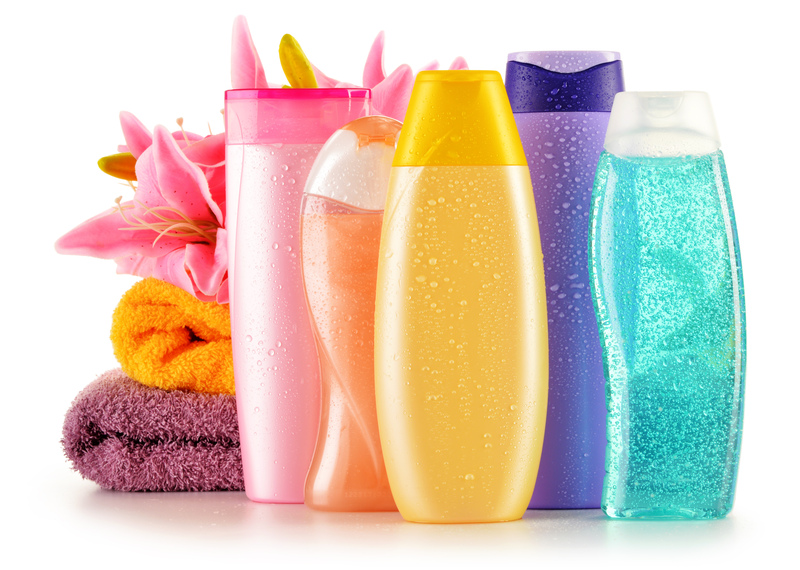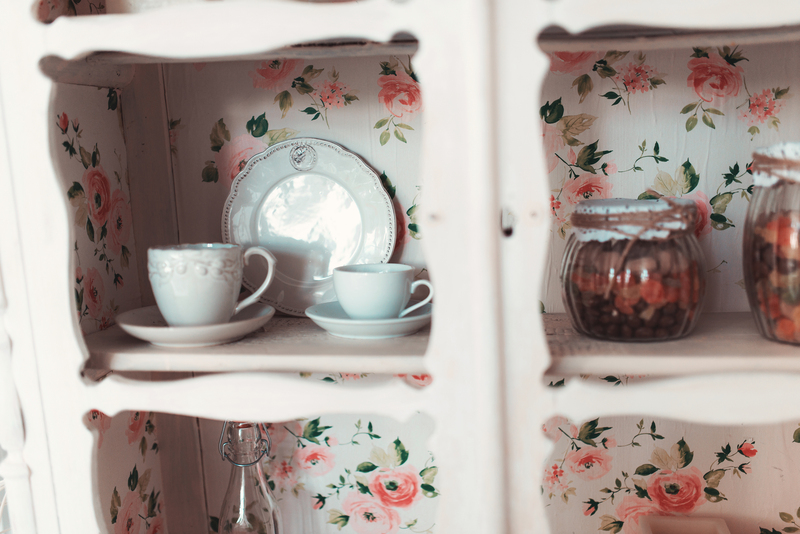Clever Hacks to Absorb and Erase Damp Odors
Posted on 14/06/2025
Clever Hacks to Absorb and Erase Damp Odors
Unpleasant damp odors in your home, basement, bathroom, or laundry room can be a persistent source of embarrassment and discomfort. Not only can these musty smells make spaces feel less inviting, but prolonged exposure to dampness can also be a breeding ground for mold, mildew, and bacteria. The good news? By adopting some creative and proven hacks, you can absorb and erase musty damp odors effectively and restore your living spaces to fresh, clean-smelling sanctuaries.
Understanding Damp Odors: What's Causing That Musty Smell?
Before diving into solutions, it's crucial to grasp what's causing that persistent undesirable aroma. Damp smells are generally the result of excessive moisture, poor ventilation, leaking pipes, water damage, or condensation. This moist environment is perfect for mold and mildew growth, both of which emit volatile organic compounds (VOCs) responsible for the distinctive musty, earthy odor.
- Poor ventilation: Traps moisture indoors.
- Hidden leaks: Pipes, roofs, or windows might be the culprit.
- Condensation: On windows or cold surfaces, frequently in bathrooms and basements.
- Wet fabrics: Carpets, towels, and laundry can harbor dampness.
Why Tackling Damp Odors Matters
Ignoring dampness and musty smells doesn't just make your home less pleasant--it can also risk structural integrity and your health. Mold spores and mildew not only damage walls, ceilings, and fabrics, but also cause allergies, respiratory problems, and even headaches for sensitive individuals.

Practical Hacks to Absorb Damp Odors
Looking to absorb damp smells quickly? These tried-and-true hacks use everyday household items and smart practices to eradicate moisture and neutralize musty odors at their source.
1. Baking Soda: The Superstar Odor Absorber
Baking soda is renowned for its ability to soak up moisture and absorb odors naturally. Place open bowls or boxes of baking soda in problem areas such as closets, cabinets, near drains, or inside shoes. For carpets or upholstery, sprinkle a generous amount, let it sit for several hours (or overnight), and vacuum thoroughly. Baking soda not only removes the damp smell but also works as a natural deodorizer without harmful chemicals.
- Tip: Replace baking soda every month for ongoing freshness.
2. Activated Charcoal: Powerful and Long-Lasting
Activated charcoal is another odor-eating powerhouse. Its porous structure traps moisture and VOC molecules, eliminating persistent damp odors. You can purchase ready-made charcoal bags or make your own using loose activated charcoal in breathable pouches. Place them in humid areas, wardrobes, or the corners of a musty room.
- Pro tip: Reactivate charcoal bags by placing them under the sun for a few hours each month.
3. White Vinegar: Nature's Neutralizer
White vinegar is a natural deodorizer and mild disinfectant. Leave open bowls of vinegar in damp spaces for several hours or overnight to neutralize musty smells. For a more targeted solution, mix equal parts white vinegar and water in a spray bottle and mist affected areas (great for fabrics, walls, and tiles). The vinegary smell fades quickly, leaving behind a fresher environment.
- Safety note: Always spot test on fabrics and surfaces to avoid damage!
4. Silica Gel Packs: Small But Mighty
You've seen silica gel packs in shoe boxes, bags, or electronics--they absorb excess moisture efficiently in contained spaces. Collect these packets and place them in drawers, shoes, toolboxes, or storage bins prone to dampness. They're especially effective at preventing the return of musty odors.
5. Cat Litter: Not Just for Felines
Clay-based unscented cat litter is designed to absorb moisture and odors--making it an excellent, inexpensive solution for musty cupboards, basements, or laundry rooms. Fill a shallow pan with cat litter and leave it in musty corners. Stir or replace every few weeks to keep it functioning at peak performance.
6. Coffee Grounds: Double-Duty Deodorizer
Used (dried) coffee grounds not only absorb unwanted odors but also impart a subtle, pleasant scent. Place bowls of dry grounds in refrigerator shelves, musty closets, or even your car. Swap them out weekly for best results.
Tactics to Remove and Prevent Damp Odors
Absorbing odors is half the battle--physically erasing musty smells and preventing their return requires a proactive mindset and regular upkeep.
Deep Cleaning and Disinfection
- Wash textiles frequently: Regularly launder curtains, bedding, covers, and even shower curtains to remove embedded moisture and odor particles.
- Steam-clean carpets and upholstery: High-temperature steam kills mold and bacteria hidden deep in fibers.
- Scrub walls and hard surfaces: Use a mix of water, vinegar, and a few drops of tea tree oil to clean tiles, grout, and baseboards.
Improve Air Circulation
- Open windows daily: Even 15 minutes of fresh air can flush out stagnant, humid air and disperse lingering smells.
- Use fans and exhausts: Especially in kitchens, bathrooms, basements, and laundry rooms, to keep air moving and moisture levels low.
Deploy a Dehumidifier
For chronic dampness, a quality dehumidifier is a sound investment. By removing excess moisture from the air, you'll not only absorb and erase damp odors but also prevent mold and mildew from taking hold. Opt for a unit with a humidity sensor for energy efficiency and place it in the problem area for optimal results.
Check for and Fix Hidden Leaks
- Inspect pipes, windows, and roofs: Regularly check for signs of water drips, condensation, or discoloration.
- Seal up gaps: Use caulk or weather stripping around doors, window frames, and floors to stop moisture ingress.
- Repair plumbing issues promptly: Even small leaks can fuel ongoing odor and mold problems.
Use Natural Essential Oils
Lavender, eucalyptus, or tea tree oil are excellent for both their antimicrobial properties and fresh, clean scents. Add a few drops to a diffuser, bowl of baking soda, or cleaning mixture. Not only do these oils help cover musty smells, but they also actively combat odor-causing bacteria and fungi.
Absorb and Eliminate Odors in Specific Spaces
Let's tackle common hotspots for damp odor problems, and target your approach for maximum effectiveness:
- Basement: Use a dehumidifier, run fans, and deploy open charcoal bags or baking soda near walls and drains. Consider waterproofing solutions if leaks are recurring.
- Closets & wardrobes: Place small bowls of baking soda or charcoal on shelves. Hang moisture absorbers, and make sure clothes are fully dry before putting them away.
- Bathroom: Keep the exhaust fan running during and after showers, clean vents regularly, and use silica gel packs or cat litter in under-sink cabinets.
- Kitchen: Ensure no pipe leaks, wipe down surfaces frequently, and use vinegar sprays on tiles and grout.
- Laundry baskets: Sprinkle baking soda over dirty clothes, and don't let wet items sit for long before washing.
- Shoes: Fill socks with baking soda or charcoal and tuck them inside shoes overnight.
Eco-Friendly and Chemical-Free Solutions
If you're environmentally conscious or sensitive to harsh chemicals, there are smart ways to fight damp smells without industrial deodorizers or air fresheners.
- Salt: Large bowls of plain rock salt can pull moisture from the air overnight.
- Citrus peels: Dried lemon, orange, or lime peels act as mild deodorizers while giving off a fresh scent.
- DIY potpourri: Combine dried flowers, cinnamon sticks, and essential oils in open jars.
- Houseplants: Certain indoor plants (like peace lily, spider plant, or Boston fern) help purify and slightly dehumidify air.
Smart Habits to Prevent Damp Odors From Returning
With damp and musty smells under control, adopt these habits to keep your home smelling fresh year-round:
- Regularly air out rooms--even in winter, a brief blast of fresh air makes a big difference.
- Avoid drying laundry indoors without proper ventilation.
- Keep bathrooms dry after use--wipe down tiles, use a squeegee, and run a fan.
- Don't let spills linger--clean and dry water spills immediately.
- Inspect seals and drainage once a season to fix leaks early.
- Clean soft furnishings (cushions, rugs, curtains) regularly.
When to Call In Professionals
If musty odors persist despite diligent efforts, or if the problem is due to severe mold, hidden structural leaks, or water damage, it may be time to consult with a mold remediation or restoration specialist. Health symptoms like chronic coughing, worsening allergies, or visible mold spreading should never be ignored.

Summary: Banish Musty Odors with Smart Strategies
Whether you're battling a dank basement or a humid bathroom, these clever hacks to absorb and erase damp odor offer practical, affordable, and eco-friendly solutions. By combining smart habits, everyday absorbers, deep cleaning, and proper airflow, you'll win the war against musty, unpleasant smells for good. For persistent problems, remember to look for the root cause and never hesitate to seek professional expertise. A fresh, healthy home environment is well within reach--start with these clever hacks today!
Frequently Asked Questions
-
Can I use essential oils to absorb damp odor?
Yes, essential oils don't absorb moisture but do neutralize and mask musty smells while offering antimicrobial benefits. Use them in diffusers, sprays, or cleaning mixes. -
How can I tell if a damp odor is dangerous?
Persistent, foul, or chemical-like smells, visible mold patches, or prolonged humidity should be cause for concern--especially if paired with allergic symptoms. Seek professional assessment if in doubt. -
How long does it take to absorb and erase damp odors?
Results vary depending on the extent of moisture and the methods used, but with dedicated hacks, most musty odors should be noticeably reduced within days. -
What is the fastest way to remove musty smells?
Open windows, use a dehumidifier, and apply baking soda or vinegar right away for an immediate improvement.
Ready to absorb and erase that damp odor for good? Try these strategies today for a fresher, healthier home!


